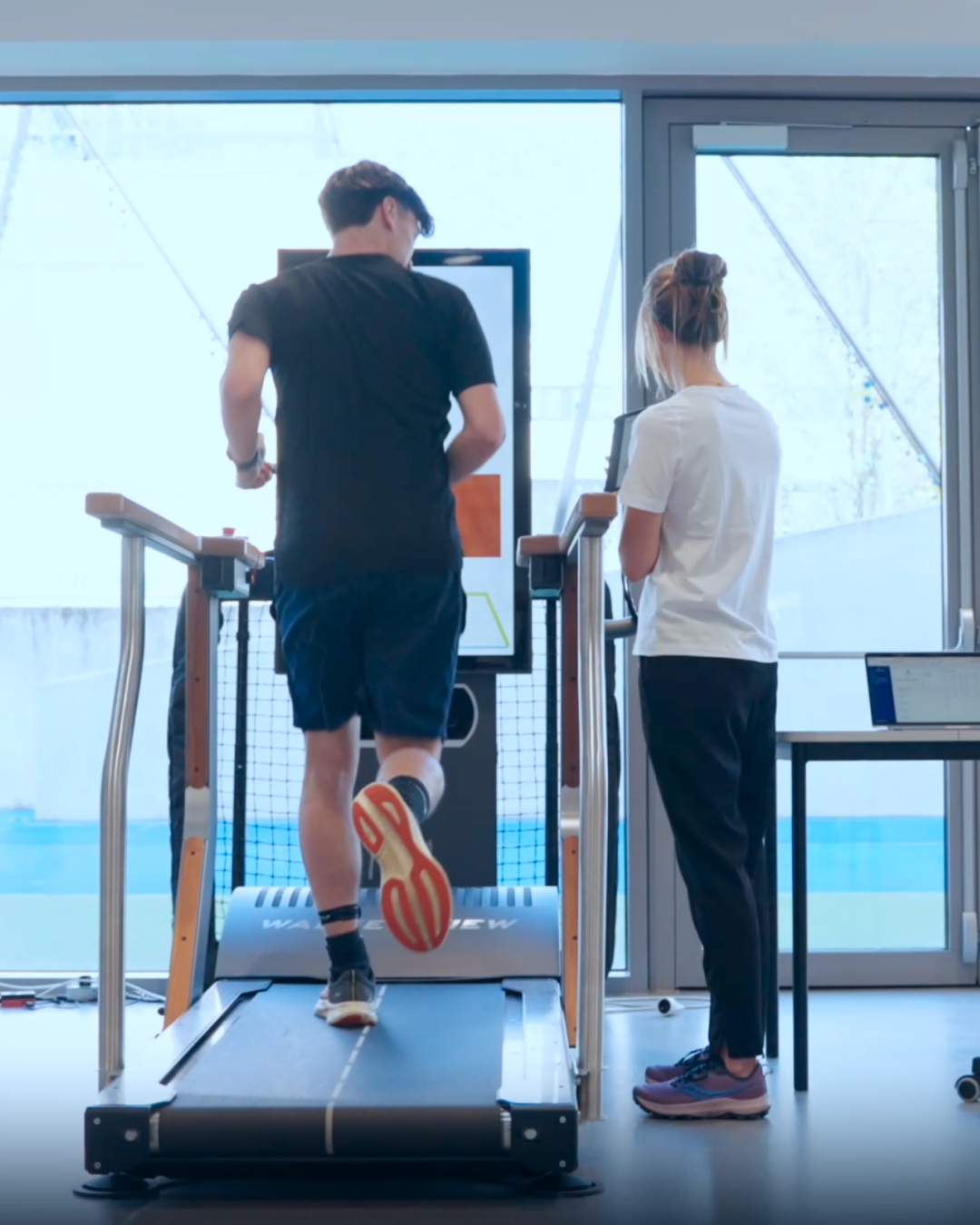Stay tuned,
to stay OnTracx
Receive the latest updates and tips & tricks
News
Discover the latest science-backed articles designed to help you
prevent running injuries and train smarter.
Receive the latest updates and tips & tricks
Discover the latest science-backed articles designed to help you
prevent running injuries and train smarter.

Most running injuries develop gradually when training outpaces the body’s ability to adapt. While rehab restores function and builds load tolerance, nearly half of runners remain stuck in the injury–rehab–relapse cycle. OnTracx supports breaking this cycle with smarter load management for safe return to run.

Every stride tells a story — and when you pick up the pace, that story changes. Every runner has a unique relationship between speed and load, shaped by their biomechanics. Understanding that curve can transform how you train, recover, and return from injury. Read the full blog post to learn how running speed shapes your biomechanical load!

The spin-off from Ghent University raised €1.2M in seed funding from imec.istart Fund, PMV, KBC, business angels, and VLAIO. Since launching in April 2024, it has sold over 500 sensors, partnered with 20 sports medical centers, and will use the funding to enhance its product and expand internationally by helping every runner stay injury-free.

Many runners like to schedule a very long run just before a big event to build confidence. But research shows that even one session can significantly increase your risk of injury, and with it, the risk of missing your running event. In a recent study of 5,200 runners, researchers identified key patterns showing how sudden spikes in training load are strongly linked to higher injury risk. Discover what the data reveals & how to recognize and avoid these load spikes so you can train with confidence, without breaking you down.

Mechanical overloading is a leading cause of overuse injuries, making it essential to consider the impact load associated with different footwear when selecting running shoes. We evaluated this in different runners and found that each runner had a different shoe that resulted in the lowest measured load. These findings underscore the value of incorporating objective load measurements to identify the shoe that offers the most appropriate biomechanical fit.

Up to 79% of runners get injured at some point, often due to training errors. A high number of these injuries could be avoided with the right training adjustments using wearable technology for an individualized approach to load management. In this article, we’ll break down common training errors, their impact, and how to prevent them.

Learn how Dries, a marathon runner, overcame jumper’s knee with OnTracx. Discover how tracking muscle and bone load helped him train smarter, prevent injuries, and safely prepare for his next marathon.

Avoiding injuries is key to maintain consistency in your running. The "10 percent rule" advises increasing weekly running mileage or duration by no more than 10 percent to avoid overuse injuries, but research questions its effectiveness. This article explores its flaws and the need for a personalized approach to prevent injuries.

April 23th was marked as an important milestone for OnTracx as we revealed our newest innovation to the world. Months of research, hard work and passion resulted in a moment we eagerly waited for, the launch of our product.

More than half of all runners experience overloading at least once a year, resulting in painful joints or tendons. With OnTracx, the wearable and app from Ghent University’s new spin-off, you can now easily measure your load and thus reduce the risk of injury, or speed up rehabilitation.

Exercise programs are often recommended to reduce the risk of injuries, but not all exercise methods are equally effective. This article explores if & how exercise programs can prevent injuries in long-distance running, the importance of supervision, and actionable tips to enhance your running journey while staying injury-free.

Explore the multifaceted nature of running-related injuries through a comprehensive framework. Learn how understanding factors like structural capacity, cumulative load, and risk dynamics can enhance injury prevention and pave the way for injury-free running.

Think gait asymmetry causes running injuries? Think again! New research debunks this myth, showing asymmetry might not increase injury risk and could even be protective. Explore what truly drives asymmetry and why it’s time to rethink injury prevention for runners. Embrace your unique running style with confidence!

Fancy gadgets and miracle supplements won’t prevent injuries. Science is clear: safe training progression based on mechanical load data is key. Learn how running style, speed, surfaces, and footwear selection affect your body's load & how to track it with validated wearables.
Measure the mechanical load of every step you take, validated against lab based measures.
Monitor how load progresses over time, get notified when you're nearing unsafe thresholds, and stay within safe limits to minimize injury risk.
See how your running technique, terrain, and footwear choices affect your load in real-time.
Closely monitor loading and the relation with perceived pain, to optimize the return-to-run process.